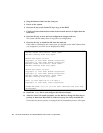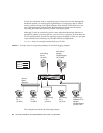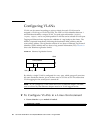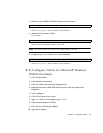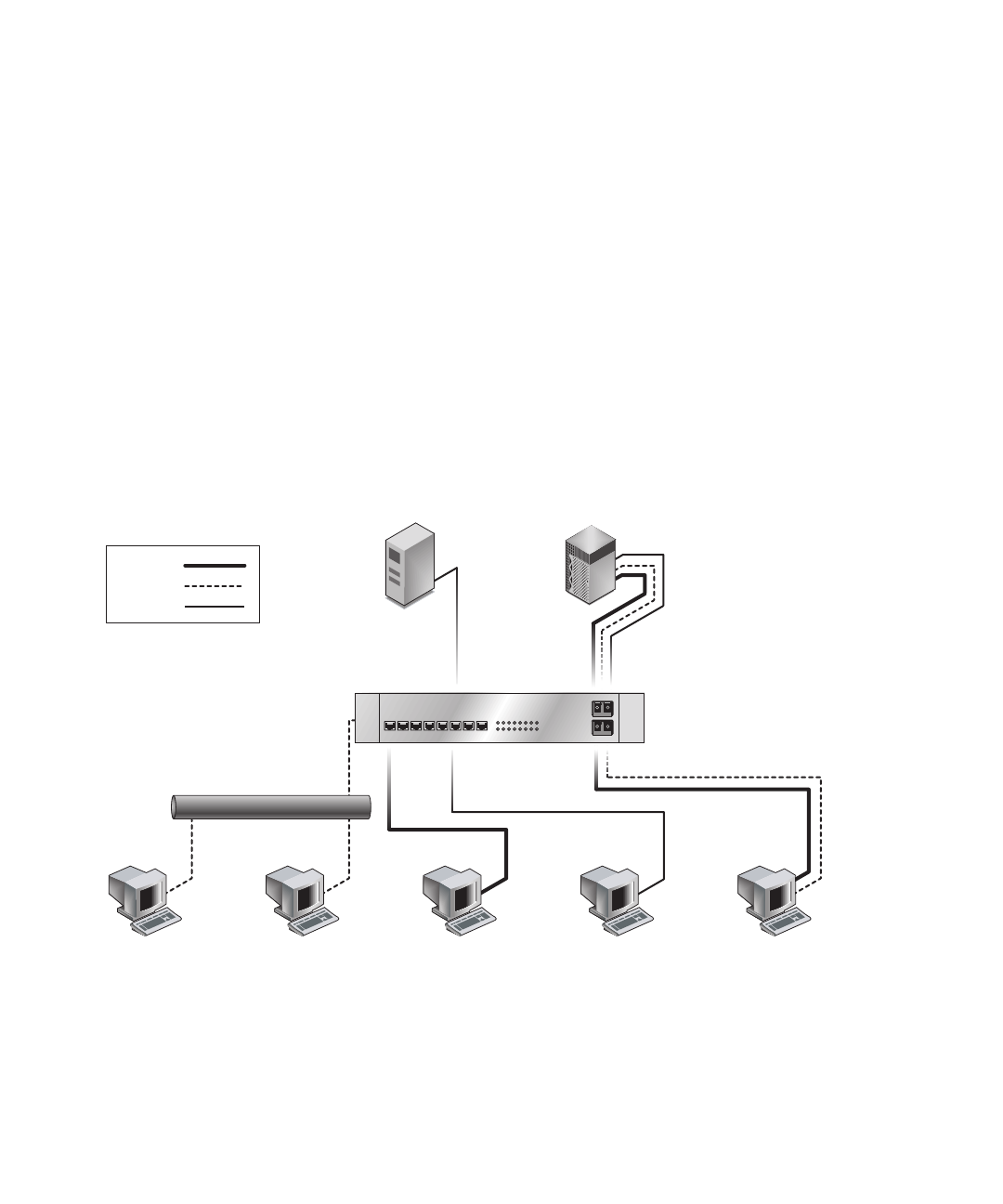
28 Sun Dual 10GbE SFP+ PCIe ExpressModule User’s Guide • August 2008
VLANs are commonly used to separate groups of network users into manageable
broadcast domains, to create logical segmentation of workgroups, and to enforce
security policies among each logical segment. Each defined VLAN behaves as its
own separate network, with its traffic and broadcasts isolated from the others,
increasing the bandwidth efficiency within each logical group.
Although VLANs are commonly used to create individual broadcast domains or
separate IP subnets, it can be useful for a server to have a presence on more than one
VLAN simultaneously. Several Sun products support multiple VLANs on a per-port
or per-interface basis, allowing very flexible network configurations.
FIGURE 6-1 shows an example network that uses VLANs.
FIGURE 6-1 Example of Servers Supporting Multiple VLANs With Tagging Adapters
The example network has the following features:
Software
PC 1
(VLAN 2)
VLAN 1
VLAN 2
VLAN 3
Software
PC 2
(VLAN 2)
Accounting
Server
(VLAN 3)
Main Server
Adapter
Gigabit/Tagged
(All VLANs)
Engineering
PC 3
(VLAN 1)
Accounting
PC 4
(VLAN 3)
Engineering/
Software PC 5
Adapter
Gigabit/Tagged
(VLAN 1 & 2)
Shared
Media
Segment





